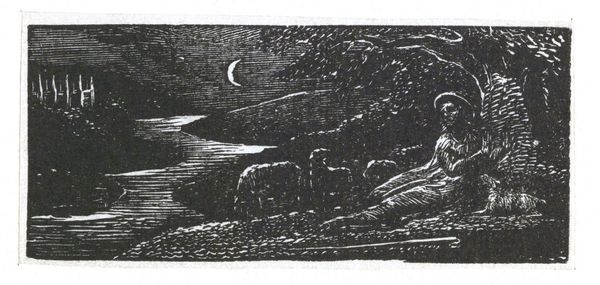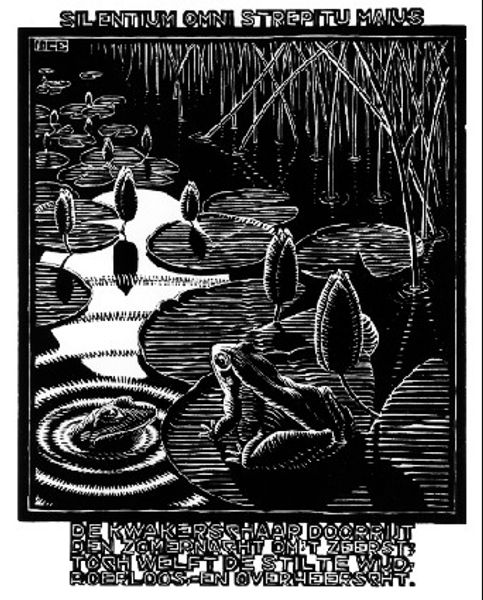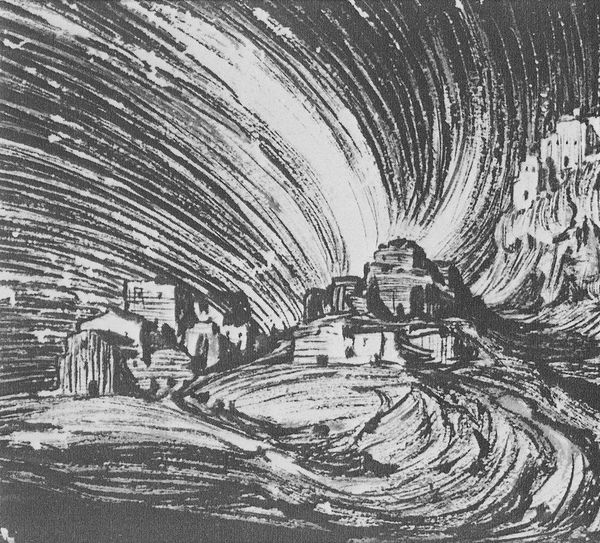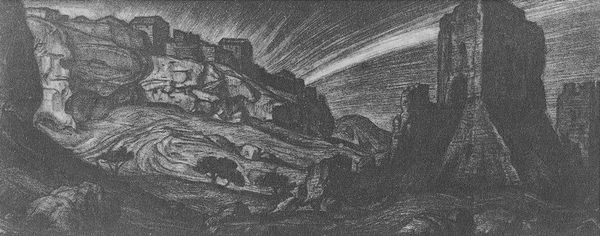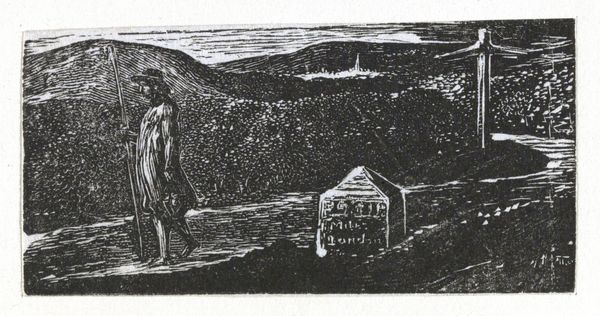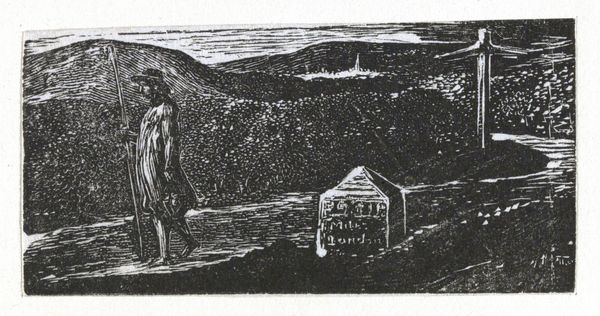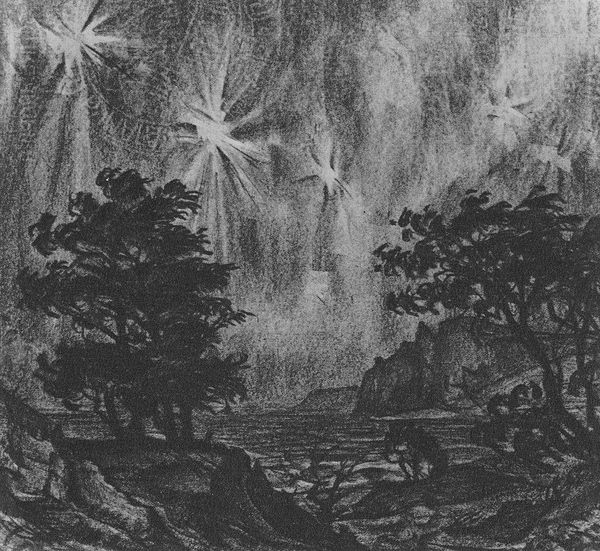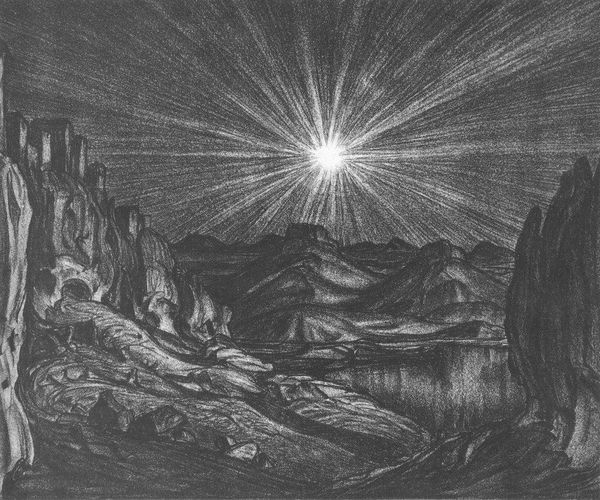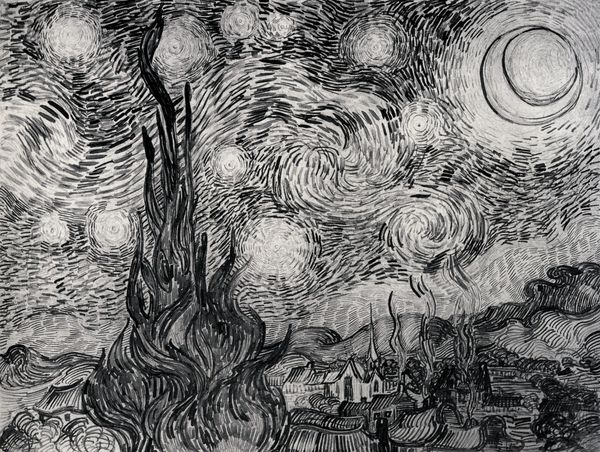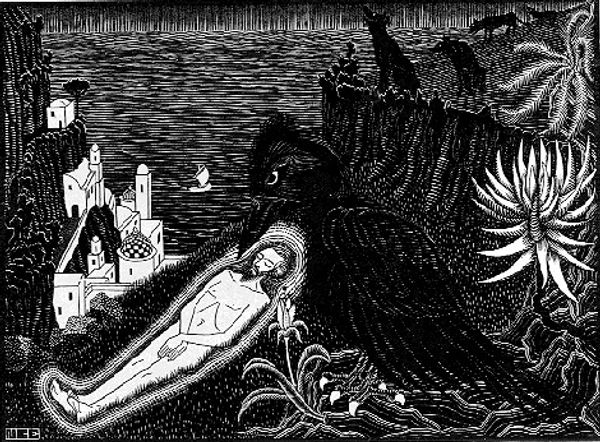
drawing, print, paper, ink, woodcut
#
drawing
# print
#
landscape
#
paper
#
ink
#
geometric
#
mountain
#
woodcut
#
line
#
symbolism
Copyright: Public domain
Curator: Standing before us is Konstantin Bogaevsky’s woodcut print, "Corona Astralis," created in 1908. I’m struck by its dramatic intensity. Editor: It's like a dreamscape. The stark black and white and bold lines lend it such a otherworldly, almost apocalyptic feel. It’s dominated by those radiating starbursts above a very rough landscape. Curator: The term "Corona Astralis," literally astral crown, already hints at its symbolism, don't you think? Look at those star formations dominating the upper register – for me they almost appear like exploding suns above this stark mountainous silhouette. The artist used simple medium—ink on paper—and very stylized line work to generate this monumental emotional impact. Editor: I see a connection to the Symbolist movement. The choice to depict this near-fantastical scene through such high-contrast graphic means, with strong political undertones—Bogaevsky, creating these apocalyptic scenes in a tumultuous historical era—was this perhaps a subtle commentary on power structures, on social upheavals viewed through a cosmic lens? Curator: It's certainly tempting to read into the period. I think of it more through its timeless appeal. He presents a striking binary – earth versus the cosmos; grounded existence confronted by something far greater, perhaps unknowable. Mountains have so many layers of associations, of resilience but also oppression. In the Symbolist movement, those celestial signs usually served as divine intervention. Editor: Do you find it oppressive? To me the lines convey both violence and vitality. The radiating bursts could be destructive or generative, almost a primal burst of creation itself…perhaps a little of both? The landscape below seems almost pummeled by the force above it. Curator: Interesting take. It reveals our different readings of the artist’s lexicon, I believe. For me, there’s a weight of predetermination present. As an iconographer I view the stars more from an aspect of order. The land exists *because* of this "astral crown." Editor: Which then leads to questions about whose "land" that becomes. The reception and significance of these potent symbols—explosive bursts, dominating landscapes—can alter radically through the lens of history, can’t they? Perhaps, depending on context and interpretation, such displays are perceived more as liberation or subjugation. Curator: That potential for varied reading is, to me, a sign of powerful art. “Corona Astralis” lets us explore cultural memory in the face of abstract, even elemental forces. Editor: Agreed. Bogaevsky offers this charged, binary world which history continues to interrogate.
Comments
No comments
Be the first to comment and join the conversation on the ultimate creative platform.
